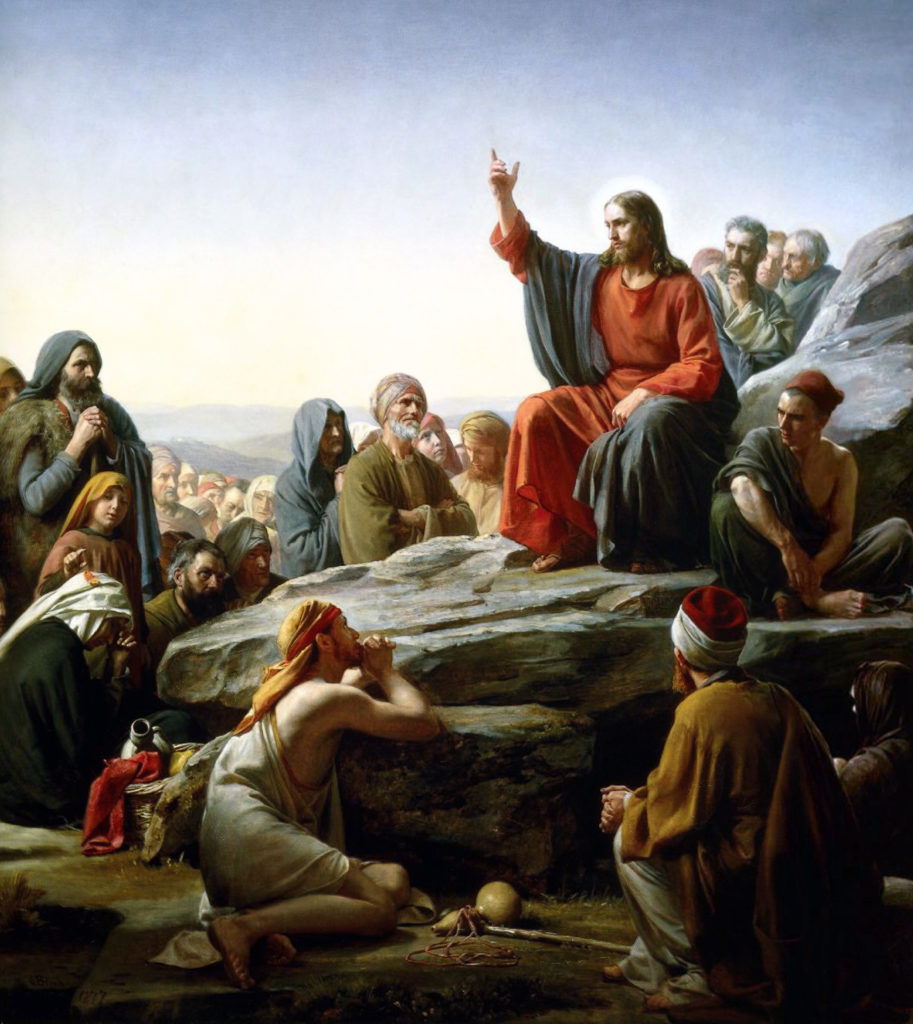Every now and then I’ll run into people (usually Dispensationalists) who insist that the Sermon on the Mount (Matthew 5) is a different occasion than Luke 6 (a passage they refer to as “The Sermon on the Plain”).
When they compare the two, they see two completely different occasions with two different sets of doctrines, ostensibly at different audiences, with different meanings and different applications. Nevermind the fact that neither Gospel states these things outright.
For me, this view strains credulity. How is that most evangelicals can harmonize other Gospel accounts with ease, but cannot find the wherewithal to harmonize these passages? Take the accounts of the Resurrection, for example. Atheists and naysayers love to bandy the variations we see in the Resurrection accounts, claiming they are contradictory and therefore the Gospels are not inerrant. But doctrinally sound evangelicals have absolutely no problem doing the homework necessary to harmonize the different resurrection accounts. So why not harmonize the sermon accounts?
Differences in eye-witness testimonies should not come as any surprise. Vagaries like this are often true for any historical event with multiple eye-witnesses. We should expect that the stories differ slightly, and many evangelical apologists (Lee Strobel [Case for Christ], Ravi Zacharias, etc) will tell you that slight variations in the various accounts actually bolster its credibility. Indeed, modern-day police will suspect collusion if eyewitnesses give exactly the same account.
So my question is this: Why not employ the same type of normal, ordinary harmonization when comparing Matt 5 and Luke 6?
My view comports with Occam’s Razor: Matthew 5 and Luke 6 are slightly different accounts of the same sermon.
A Brief Comparison
Let’s take a brief look at the pros and cons of the views.
PROS (they’re slightly different accounts of the same sermon):
- Both events are immediately preceded by Jesus calling/naming His disciples
- Both events cover (loosely) the same doctrines
- Both events are immediately followed by Jesus healing the Centurion’s son in Capernaum
Both authors place this in the same historic time frame, and give the same general content. Why insist they are two different events? Given the ease with which we reconcile the resurrection accounts, consistency demands that the burden of proof be put on the person claiming that Matt 5 and Luke 6 are different events.
CONS (they’re different sermons with different content for different audiences:
- Matthew’s account takes place on a “mount” while Luke’s account takes place on a “plain”.
However – Textual differences like “mountain” vs “plain” are easily reconciled by taking a look at the hillside near Capernaum. Take a look at the photos of the traditional location of the Sermon on the Mount. There is a ‘plain’ 1/2 way between the mountain top (where the Church of the Beatitudes is located) and Capernaum at the bottom of the mountain. On this mountain, Jesus could have gone up to the top to pray, down to the mid-level plain to preach, then continued down to Capernaum to heal. In this fashion, both Matthew (“mountain”) and Luke (“plain”) would be correct. - Matthew’s account is (mostly) in 3rd person while Luke’s account is (mostly) in 2nd person.
However – such distinctions are doctrinally irrelevant. EG: When was the last time anyone tried to make a case for “the Son of Man” being someone other than Christ because He was speaking in 3rd person? Never. - Both accounts have a different number of blessings and they are attached to different virtues (Matthew’s are spiritual, Luke’s are physical)
However – Differences in the number and order of the blessings are doctrinally irrelevant. The themes are similar. Neither Matthew nor Luke state that they recorded everything Jesus said in His sermons(s). If both men recorded part of His sermons and happened to overlap in some of their coverage, that would perfectly explain what we see in both accounts – especially if Jesus repeated certain sermons or themes within a sermon.
When we look at several of Jesus’ other teachings throughout the Gospels, we see an overlap both in the content of Jesus’ teaching and the particulars of the various author’s recordings. A perfect example would be the parables in Matt 13, Mk 4 and Luke 8. If you compare and contrast them, you’ll see that different details and orders emerge. Surely we’re not to conclude that these accounts took place on different occasions! That would be as absurd as insisting on multiple resurrections!
A far simpler and more sensible explanation is as follows:
- None of the authors record absolutely everything Jesus said and did (see Jn 20:30; Jn 21:25)
- The authors frequently overlap in what they record, emphasizing various details according to their particular perspectives
- Jesus occasionally repeated various themes within sermons.
This observation is consistent with any other historical event where multiple human eye-witness step forward to give an account of what they witnessed.
[Sidebar: There is the off chance that the Gospel writers were stressing the truth of the various doctrines and not concerned about the particulars as to who said what when. I’m not fond of this view, but admit that it is occasionally compelling. For example, did Jesus say “You shall love the Lord your God with all your heart/soul/mind/strength” [Matt 22:37], or did the scribe [Luke 10:27] ..or did both persons say it? All 3 options are well within the realm of possibilities.]
Conclusion
Given that the historical time frame is a match, and the content generally matches, and we’re content to harmonize other variations in the Gospels (eg, resurrection), why insist on an explanation that goes against what is intuitively obvious?
In Bible college we learned that the first rule of hermeneutics is “when common sense makes sense, seek no other sense lest you produce nonsense”.
Surely that applies here.


Leave a Reply